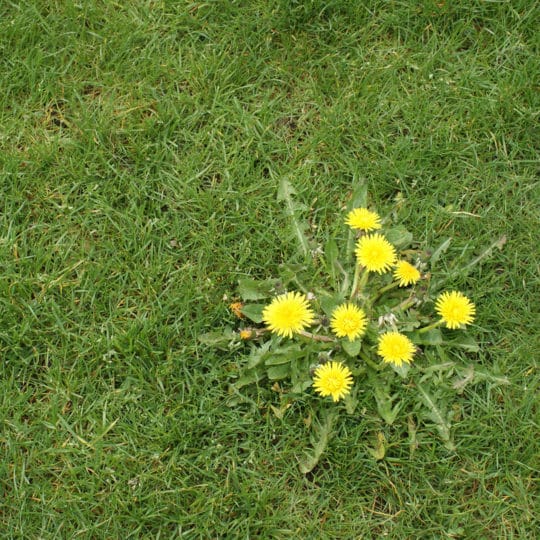Preventing Broadleaf Weeds
They’re Easy to Spot & Hard to Control
Posted
July 6, 2023

When the summer heat starts to stunt the growth of grass and plants, there’s one thing that’s sure to thrive: weeds. While some tall, skinny types may look like grass, you may see larger clumps that need to be controlled. Learn to identify, control, and the best way of preventing broadleaf weeds from taking over this season.
Identifying Broadleaf Weeds
Many homeowners are quite familiar with different types of broadleaf weeds, especially dandelions and clover. Unlike the tall and slender grassy weeds, broadleaf varieties are true to their name. They may appear in clumps around your lawn or a single stalk in your garden. Some of the more common types include:
- Dandelion
- Clover
- Ground ivy
- Oxalis
- Chickweed
- Henbit
- Thistle
Wherever they appear, they’re easy to spot with their larger, flat leaves that are often serrated and sometimes sprout colorful flowers.
Controlling Weeds
Broadleaf weeds may be easy to spot, but they’re tougher to control. These aggressive plants thrive in any weak areas around your yard and spread fast when given the chance. There are lawn-friendly spot treatments available when you start to see signs of weeds. There are also pre-emergent weed control formulas for areas that have been hit before. These products work best early in the spring before the weeds emerge.
If you’re looking for a more natural option, hand-pulling weeds is one solution. Be sure to pull the root out too or the weed will grow back. There are also weed blocking materials, like mulch for gardens and landscape cloth for pathways. When it comes to controlling weeds in your lawn, your best bet is trying to prevent them in the first place.
Preventing Broadleaf Weeds
One of the best ways to prevent weeds from showing up in your yard is to regularly maintain your grass so it grows thick and lush. Since more weeds tend to grow in weak areas, you can easily crowd them out with a healthy lawn. Here are a few key tasks to focus on:
- Feeding. How do you feel when you’re hungry? Lawns that don’t get enough nutrients from fertilizer end up getting stressed and weak. Start in the spring and finish in the fall to get your grass through the harsh seasons. Aerating and dethatching your lawn makes it easier for nutrients to reach the grass roots.
- Watering. Grass gets dehydrated too. Deeply water your lawn to encourage the roots to grow deeper. This makes it easier to access groundwater during droughts.
- Mow high. Help shade your soil with tall grass and limit the amount of sun weed seeds need to sprout. Cutting the grass too short not only scalps your lawn, but you’re drenching those weeds in all the sun they need to succeed.
- Reseed. Patch any bare spots in your lawn to limit the spots where weeds will grow. Seeding takes hold best after aerating in the spring or fall.
While it may seem like more work to maintain a healthy lawn, you’ll be limiting the amount of time it takes fighting weeds and regrowing grass. If you need help with any maintenance schedule, contact the lawn care specialists at Cardinal Lawns today.

Download Your FREE Lawn Weed Guide
Before weeds take over your yard this season, learn to identify and prevent them in the first place. Keep your lawn looking great all year!